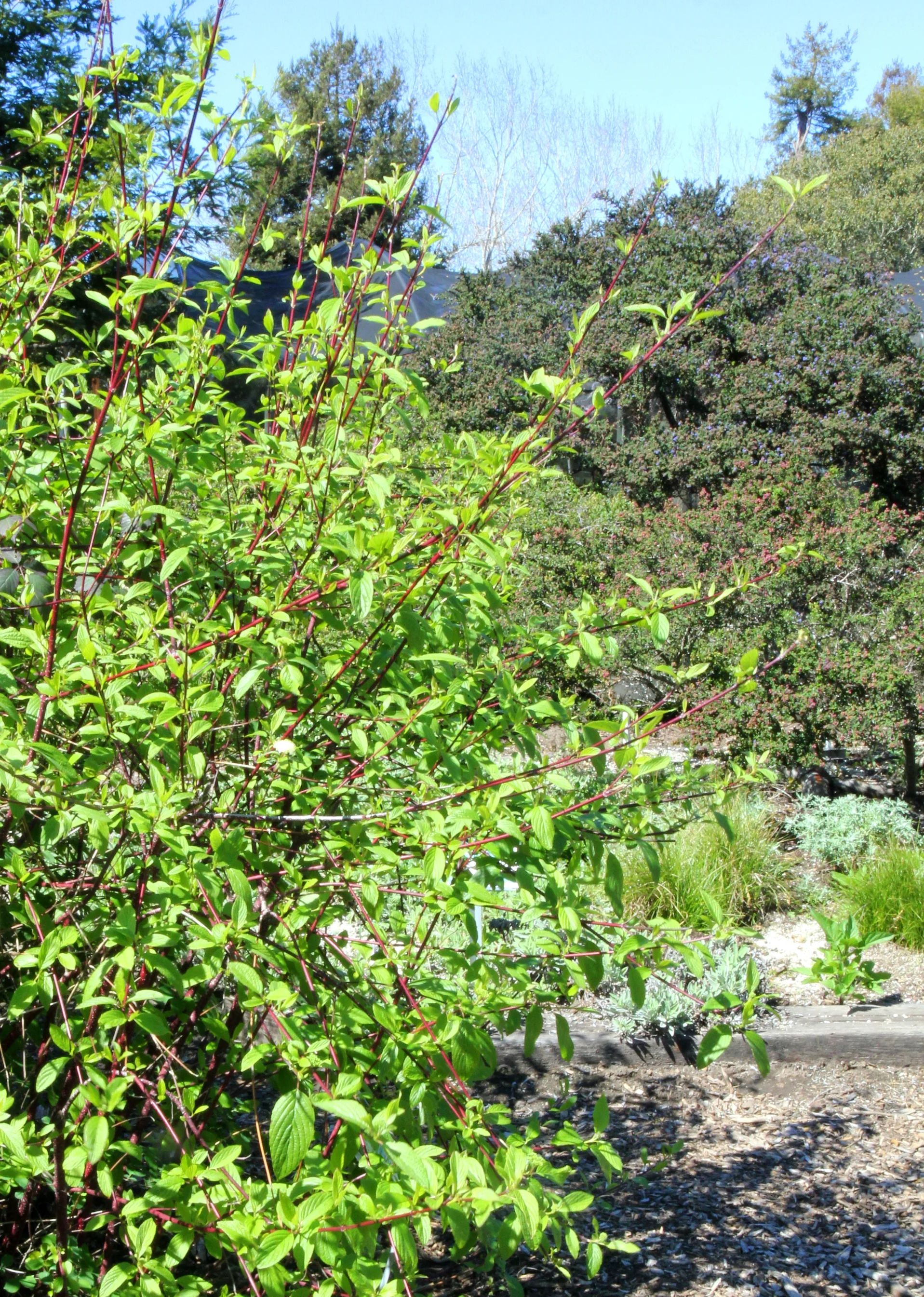Cornus sericea ssp. sericea
American/Redtwig Dogwood
This deciduous shrub is fast-growing in wet areas, although it rarely gets more than 6 feet tall. This plant will spread by underground runners to form wide thickets. New stems are bright red and bear 2- to 3-inch clusters of small, white flowers in spring. It has brilliant red foliage in fall and long-lasting bluish-white berry clusters.
Wildlife value: A very wide variety of animals use this shrub. Mammals such as White-tailed Deer, Mule Deer, elk, Cottontail Rabbits, and Snowshoe Hares eat it and take cover in it; so, too, do numerous birds, Bobwhites, Ring-necked Pheasants, wild turkeys, and grouse among them. Black Bears eat the fruits, as do songbirds, grouse, quail, partridges, ducks, crows, mice and other small mammals, and even Cutthroat Trout! Deer Mice, Meadow Voles, and other small rodents eat the bark and young stems; beavers use it for food and to build dams and lodges. Redtwig Dogwood also provides important cover, shade, and nesting sites for many types of birds and small animals. Because the flowers and fruits remain on the branches for such a long time, this plant also attracts many insects which, in turn, attract other animals.
Uses: Native Americans used the long slim stems in basketry and obtained dyes from the bark and roots. Native Americans and early settlers smoked the inner bark, stem scrapings, and leaves, and tribes in southern California dried the inner green cambium and smoked it ceremonially. This shrub was also used to produce medicines for fighting fevers and coughs.

